What if you could be customer-centric while capturing valuable product insights? Find out how.
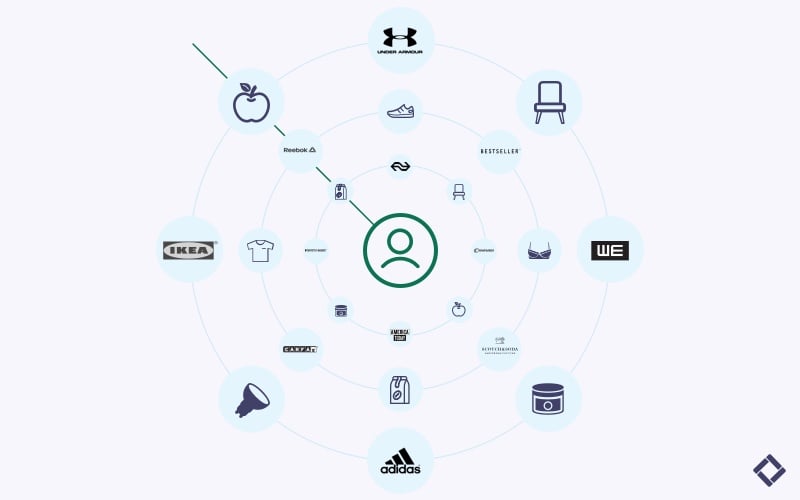
What if you could be customer-centric while capturing valuable product insights? Find out how.
Jack is itching to buy the perfect running shoe. He needs it for the upcoming marathon. Plus, his wife keeps berating him for not having the correct support - “At your age!”.
So where does he search for the right shoe?
Jack opens his email. Immediately, he’s attracted by the subject line: “Hey Jack, still running? Check out our new trainers!”.
Jack is then redirected to the webshop’s PLP. All the shoes are already in his size! And they’re all for long-distance runs! And perfect for tarmac!
Jack chooses a shoe with an accompanying product video. He clicks the 3D printing option. Uses his phone to measure the exact dimensions of his feet. Changes the color of the shoes to blue, the laces to soft, and the pronation to neutral.
Jack checks out, choosing to pay extra to offset the CO2 emissions caused by manufacturing and shipping his new shoes.
By now you’re probably thinking: is this the future of shopping?
In fact, all of these product-driven customer experiences already exist. The future of eCommerce is here. And its already leveraging customer-centric innovative technologies.
But it’s not just about technology retailers will be using. It’s also about how they will facilitate their personalization efforts.
To give you a better idea, this article takes you through eleven innovative examples of product-driven customer experiences.
In the end, what this new direction achieves is a very happy customer: Jack has found the perfect, personalized running shoe.
The webshop wins. Jack wins. Even his wife wins.
Why else is this so important?
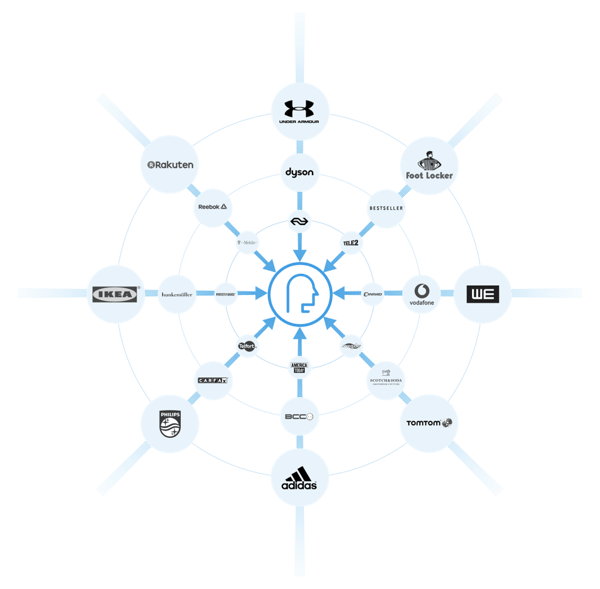
Customer-centric companies are 60% more profitable than companies without a customer-focused strategy.
Think about it:
You’re selling products based on how they benefit the lives of your customers. The more you keep the customer at the forefront of all your decisions, the better your marketing will resonate, the more sales you’ll make, and the stronger your brand will be.
Customer-centric brands thrive. Take originally DTC retailers like Glossier, Everlane, or Warby Parker. Known for their extensive social media strategy and customer-centric direction these brands are quickly taking over their share of the market.
The bottom line?
If you aren’t customer-centric, you won’t be able to compete successfully in the changing world of retail, where consumers are becoming increasingly more demanding.
So what does it mean to be customer-centric? In a nutshell, true customer-centric retailing means:
This last point is key for eCommerce: you can’t have a truly customer-centric direction if you aren’t data-driven. And without psychology to enhance your datasets, you’ll find it more difficult to turn browsers into buyers. That’s why the examples below show a smart combination of both psychology and data.
Data-driven strategies are the new wave of customer-centricity in retail.
So how do you become more data-driven in a market where data-savvy companies like Amazon are leading?
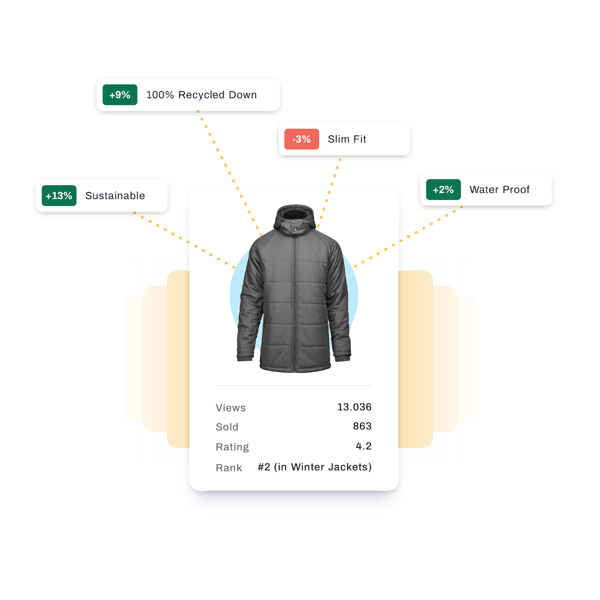
Growing data privacy concerns and the shift of attention from brick-and-mortar to eCommerce has led to new ways of leveraging data to achieve customer-centricity.
While there are many ways retailers are doing this, product personalization has proven to delight customers both online and off. This new approach brings back some of the things that retailers have neglected since the shift from product to customer-centricity.
Product personalization starts by understanding the characteristics of your products. This means investing time and money in a product analytics strategy and a robust testing environment to see which characteristics appeal to which customers.
Then, it’s about applying your results in order to communicate the right product message to the right customer at the right time. This shift to Product Intelligence actually bridges the gap between product and customer-centricity. It’s an exciting new direction for eCommerce, and many of your peers are already experimenting with this strategy.
Let’s take a look.
Testing product attributes on-site
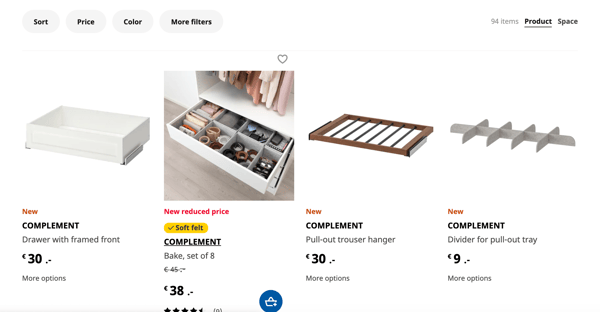
IKEA tests product badges on-site of different attributes like color, material, and shape. In this example, promoting the drawer’s “soft-felt”.
By running experiments using different product badges, IKEA is able to test which attributes drive purchase behavior.
This means they can highlight exactly what their customers are looking for in their products. Psychologically, this facilitates decision-making for the customer and boosts purchasing confidence.
The process doesn't just drive conversions - IKEA is also able to gather valuable data about their customer segments.
It’s a win-win on all fronts!
Customization options and personalized PDP
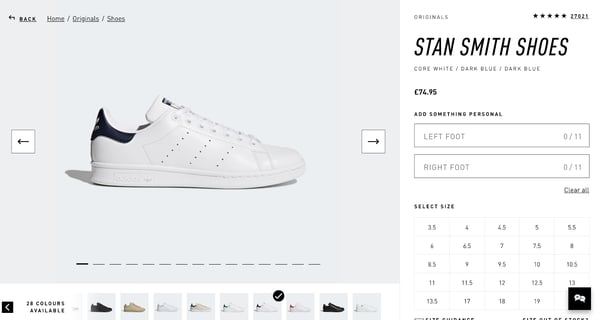
One obvious customer-centricity example is to have customization functions on-site. And the reason this trend is here to stay? Legacy retailers like Converse, Lacoste, Ray-Ban, and Adidas are following suit.
Unlike other brands, however, Adidas keeps their customization simple. They only offer two customization options:
The psychology behind this is simple: if you let your shoppers customize products for themselves they endow the product with a sense of ownership and are more likely to purchase it. But keeping it simple like Adidas does removes decision stress while streamlining the customer journey.
Adidas doesn’t need the fancy customization engines where shoppers can build products from scratch because their products are well-known in the first place. Instead, they focus on personalizing the entire PDP around those popular products.
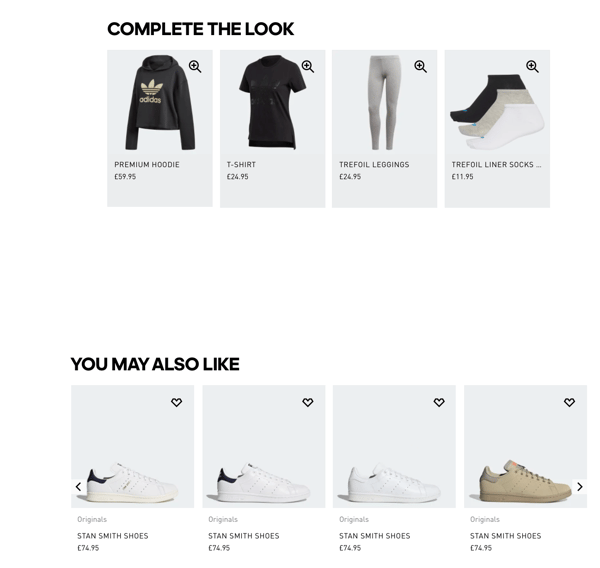
Take their product recommendations. These are nudges that work especially well at this stage of the customer journey because they provide more information to the shopper based on their data profiles (behavioral, demographic, maybe even psychographic data, depending on which customer segment is being served).
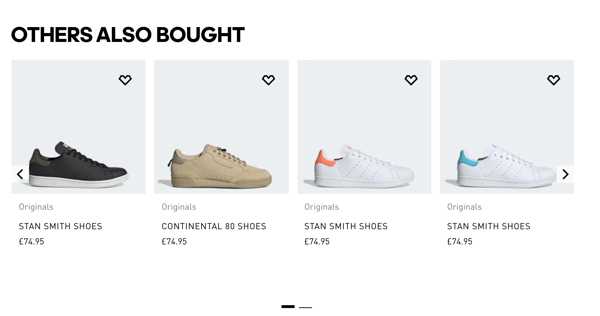
They help customers find the products they want faster, while providing the opportunity to increase their AOV. In this second recommendation engine, they also leverage Social Proof.
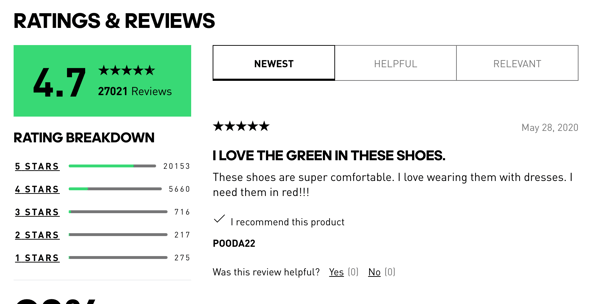
In the end, this detailed and personalized PDP is customer-centric because it:
Choose what you pay
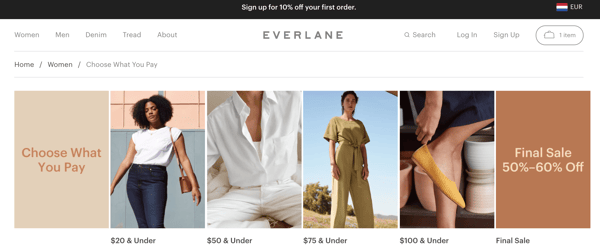
Psychologically, increasing the autonomy of your shoppers is a nudge in the right direction (to checkout and beyond!). For Everlane, their “Choose What You Pay” pricing scheme does just that.
The shopper chooses between three prices (knowing all the additional costs embedded within) before adding their product to cart.
This product-driven approach to pricing allows Everlane to have a better understanding of what certain shoppers are willing to pay for certain products. It’s also consistent with their “transparent” business model (and uses persuasive pricing techniques like anchoring).
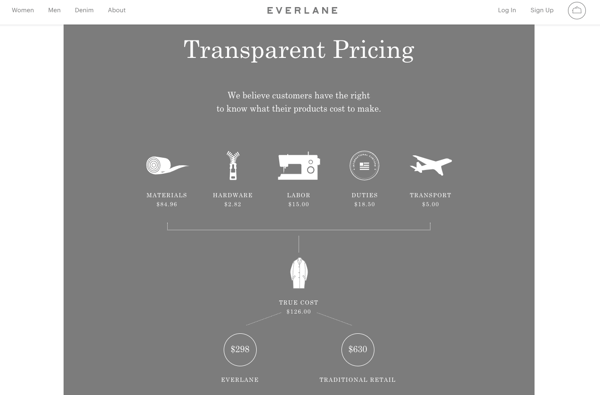
In short, Everlane’s “Choose What You Pay” is customer-centric for these main reasons:
Personalized eCommerce wardrobe
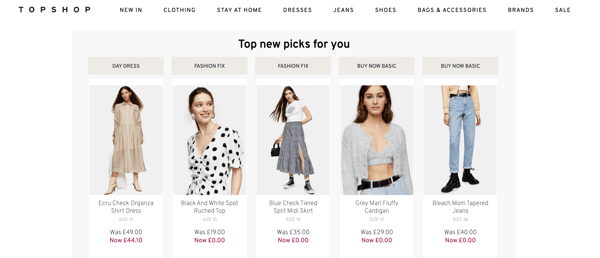
Another way to make your customers happy as they shop with you is by giving them an opportunity to save items for later. Wishlists and save for later buttons are a good way to do this, plus they generate important customer data about the types of products that individuals or customer segments are looking to buy.
Topshop goes one step further and curates an entire wardrobe for their customers based on results from their fashion preference shopping wizards.
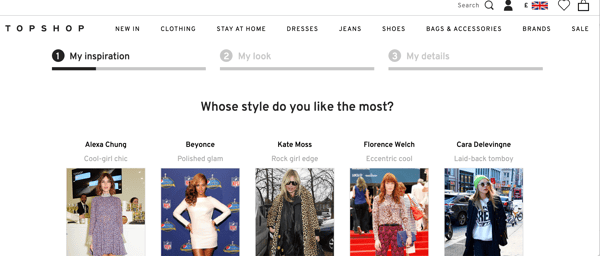
With this product-driven experience, Topshop can:
An added bonus of shopping wizards is that they can generate psychographic data about your shoppers’ interests, beliefs, and opinions to help foster that 360-customer view.
Personalized customer profiles
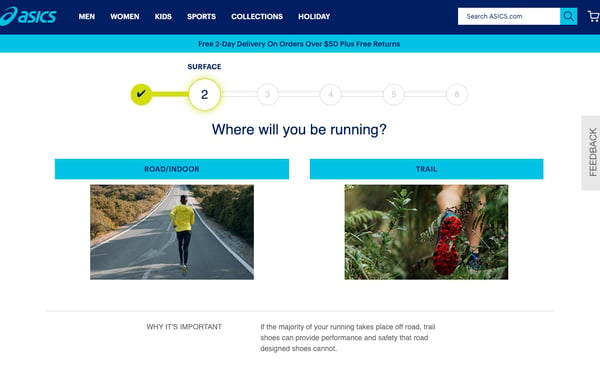
Let’s continue with the idea of a shopping wizard because they are just that powerful. ASICS does a similar thing as Topshop, only their quiz asks specific running questions to gauge the running style and goals of their customers. They use this information to recommend specific models that best accommodate those requirements.
Following the wizard, shoppers are offered several recommendations to help give them an overview of the best running shoe for their wishes. First, they give an overview of their “runner profile”, prompting them to sign up for relevant content and product recommendations.
Next to this, ASICS shows a product listing page with all the recommended shoes. If the shopper navigates to another page, the product recommendations can be accessed in a collapsible search bar on the bottom of the page or they are highlighted on the PLP with the badge “Shoe Finder Highlight”.
This example puts the shopper’s goals at the forefront of the experience by listening to and delivering on the intent of each individual shopper (for more, read about our ASICS case).
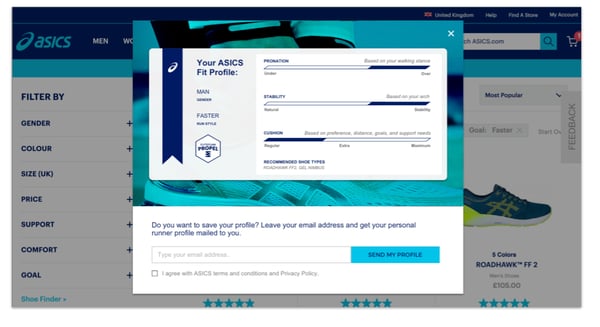
The future of retail will revolve around brands acting as the honest sources of information. This is the most logical step, as they know their products and customers better than any reseller. They can communicate the pros and cons of every product to ensure the right products end up with the right customers.
The ASICS “Runner Profile” provides an omnichannel customer-centric opportunity to:
Subscription boxes
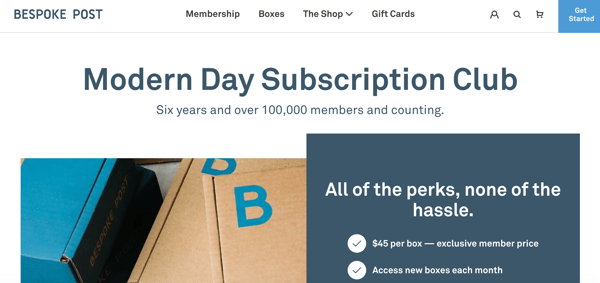
In McKinsey’s State of Fashion Report from 2019, they described the consumer trend of the “end of ownership”. In their report from 2020, their predictions for the unicorn success of Rent the Runway, StockX, and The Real Real were confirmed.
Bespoke Post follows a similarly successful trend: subscription boxes. They curate these boxes by asking about their customers’ product-preferences and then send surprise boxes every month.
And the part the psychologists at Crobox love the most? Subscription boxes:
Rental models have taken off, and subscription boxes are following fast. Both these trends are changing the customer-centric retailing game.
Virtual reality
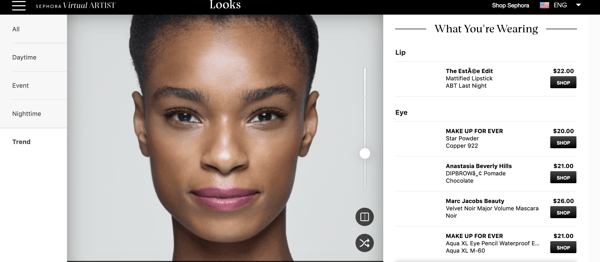
Another innovative AI tool for personalization is Sephora’s VR lab. Just like Jack was able to remotely try on his running shoes pre-purchase, Sephora’s customers can virtually try on makeup.
However, just like in our Ray-Ban example, personalization tools are nothing without the data they provide the retailer.
By tracking behavior in the VR lab, Sephora can see many things like:
This process helps Sephora understand why and how their customers use their products. This data-driven approach is a good replacement for interviews and focus groups, which are notorious for socially desirable answers and inaccuracies, because it’s based on true behavior.
This is the future of retail. Not just because Sephora is leveraging new and sexy technology, but because they are able to leverage a tool that returns product data based on how their customers interact with it.
Mobile measurements
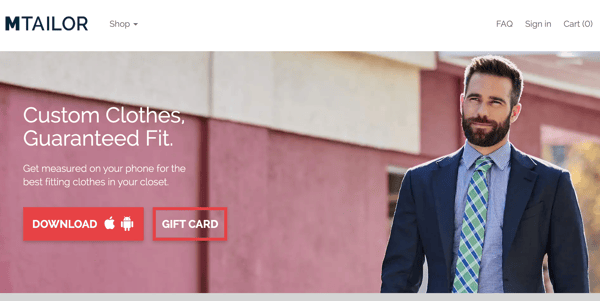
Since this is a post about innovative customer-centric products, let’s talk about new and sexy technology for a minute.
MTailor is literally a tailor on your phone. They create measurements based on an ML algorithm from their app.
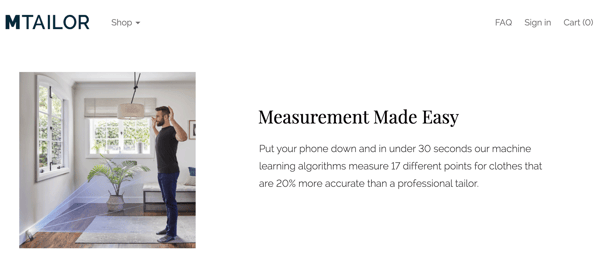
What’s so cool about this personalized shopping experience is that the customer can see the process from end-to-end. The app not only measures the shopper but lets them customize the product until they’ve made it 100% their own, like choosing fabric, fit, and colors. They even have built in product recommendations based on their customers’ choices.
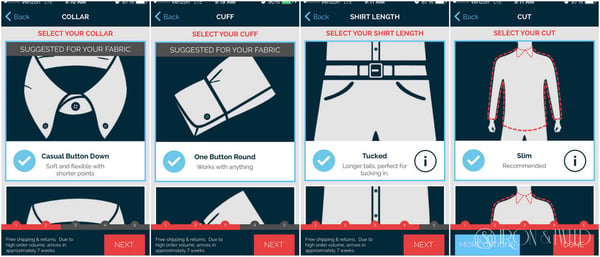
In short - the app generates information about the shopper using a product-approach to, in turn, optimize the customer experience of their products. I know this may be hard to wrap your head around, so let’s sum up how MTailor is innovating customer-centricity:
Curated products
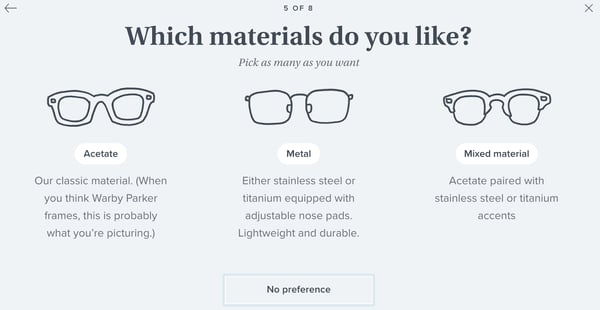
Another product-driven shopping wizard can be found on Warby Parker’s webshop. They ask questions based on their products’ attributes to help their customers find the right model faster. This approach just so happens to provide valuable customer insights as well.
Let’s recap why product-focused shopping wizards are great customer-centricity examples:
Unlike the two examples we’ve already seen, however, Warby Parker then compiles a box of “try-at-home” frames for delivery.
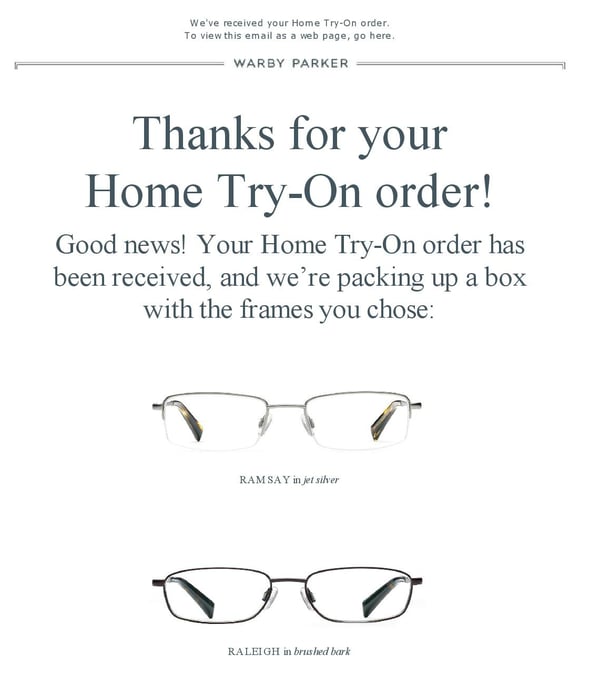
This removes choice overload for the customer since they only have to choose from a select few products already personalized based on their wizard answers. More than this, the products are tailored to the customers’ lifestyles and preferences.
The physical act of trying on the glasses will also invoke an in-store experience (as well as the Endowment Effect), priming loss aversion as people are less likely to give up something they have already tried on.
Content drives products
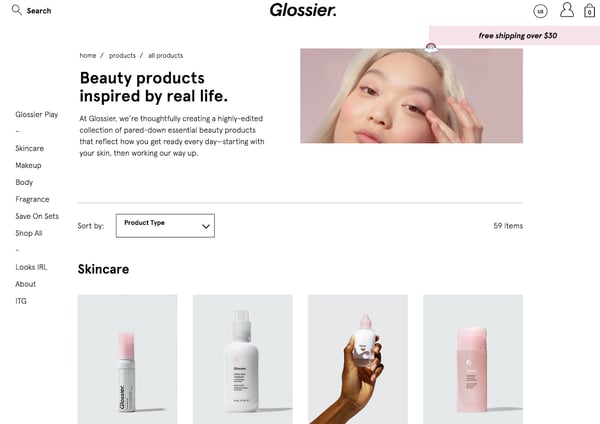
As a digitally native brand, Glossier has their online content strategy down to a T. And their tagline, “Beauty products inspired by real-life” gives a peek into their product-driven strategy.
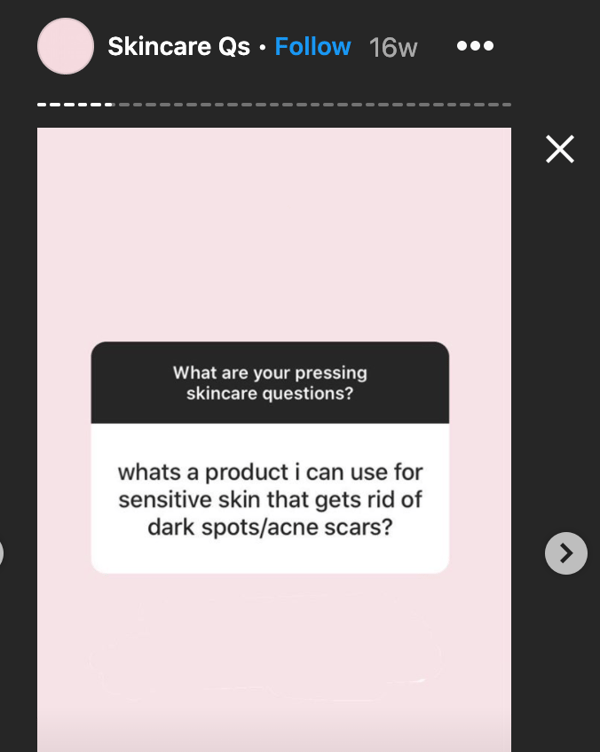
Using Instagram to engage with their customers using polls, surveys, and questions, Glossier is able to get a better understanding of the needs and desires of their target audience. Glossier products are thus continuously optimized based on customer feedback.
User-generated content validates the company’s products so that it’s the customers themselves who dictate what products they want to see in the market and why.
This means that Glossier engages customers further up the sales funnel so their shoppers’ voices actually are part of product development. Through this innovative way of using content to drive products, the customer takes centerfield in Glossier’s business growth.
Optimizing product descriptions with product badge testing
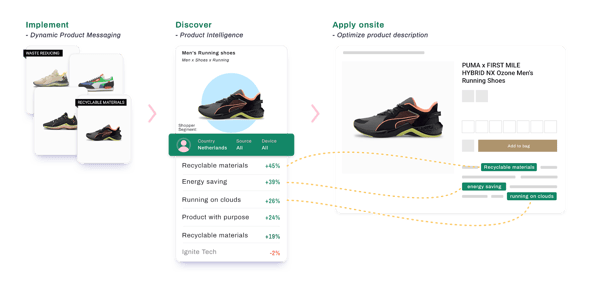
Another product-driven customer-centricity example goes back to your product badge tests (see: IKEA example). These product badges can be Dynamic Messages that highlight different attributes.
So say Puma is testing badges like “Recyclable materials”, “energy-saving”, “running on clouds” on a specific pair of shoes. By measuring how these messages increase click-rates and add-to-cart versus a control group, Puma could see which attributes resonate the most with their customers.
With these insights, they can optimize product specific promotion by integrating the best performing messages into the PDP product description or their omnichannel marketing campaigns.
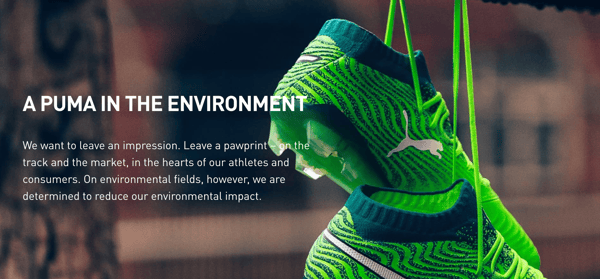
This is a product-driven approach to customer-centricity that focuses on product data to optimize content and campaigns.
Using product data in an actionable way bridges the gap between what is traditionally considered a dichotomy between product-centric vs. customer-centric. Instead of differentiating between these two approaches, the future of retail will be about these product-driven customer experiences.
So there you have it - eleven examples of product-driven customer-centricity. This is an important list to get you started on the future of retail, and how you can stay in the race.
Let’s recap:
Now it’s up to you!